-
 bitcoin
bitcoin $112195.049338 USD
2.42% -
 ethereum
ethereum $4124.915858 USD
2.81% -
 tether
tether $1.000570 USD
0.02% -
 xrp
xrp $2.861568 USD
2.25% -
 bnb
bnb $1000.346670 USD
3.04% -
 solana
solana $209.070819 USD
3.38% -
 usd-coin
usd-coin $0.999870 USD
0.02% -
 dogecoin
dogecoin $0.235379 USD
2.65% -
 tron
tron $0.335681 USD
-0.20% -
 cardano
cardano $0.803501 USD
3.38% -
 hyperliquid
hyperliquid $47.120881 USD
3.56% -
 chainlink
chainlink $21.501300 USD
3.44% -
 ethena-usde
ethena-usde $1.000571 USD
0.02% -
 avalanche
avalanche $29.793378 USD
3.62% -
 stellar
stellar $0.366964 USD
2.42%
What is the leverage multiplier for OKEx perpetual contracts?
Traders can significantly amplify their potential profits or losses by employing leverage multipliers on OKEx's perpetual contracts, magnifying both gains and risks proportionally.
Dec 15, 2024 at 06:31 pm
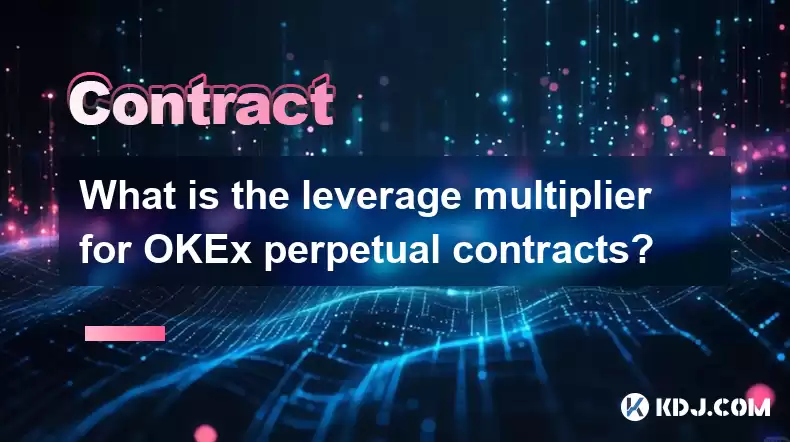
Understanding the Leverage Multiplier for OKEx Perpetual Contracts
OKEx, one of the leading cryptocurrency exchanges in the world, offers a diverse range of trading instruments, including perpetual contracts. These contracts allow traders to gain exposure to the underlying cryptocurrency's price movements without physically owning the asset. One crucial aspect of perpetual contracts is the leverage multiplier, which amplifies the potential gains and losses.
Leverage Multiplier Defined
In the context of perpetual contracts, a leverage multiplier refers to a predetermined ratio that multiplies the trader's margin or initial deposit. By employing leverage, traders can effectively control a larger notional position than their initial capital would allow. This can significantly magnify both potential profits and losses.
How OKEx Calculates Leverage Multiplier
OKEx employs a straightforward approach to calculate the leverage multiplier for perpetual contracts. The formula is as follows:
Leverage Multiplier = Notional Value / MarginFor instance, if a trader wants to open a position worth $100,000 with a margin of $10,000, the leverage multiplier would be 10x.
Benefits of Using Leverage
The primary advantage of utilizing leverage is the potential for amplified gains. By multiplying the trade size, traders can potentially increase their profits by the leverage multiplier. Notably, traders should be mindful of the elevated risks associated with higher leverage.
Choosing the Appropriate Leverage Multiplier
Selecting an appropriate leverage multiplier is crucial to risk management. OKEx offers a range of leverage multipliers for perpetual contracts, typically ranging from 1x to 100x. The optimal leverage level depends on various factors, including:
- Trading Strategy: Scalpers and short-term traders often prefer higher leverage for increased potential profits, while long-term investors may opt for lower leverage.
- Risk Tolerance: Traders should carefully assess their risk appetite before choosing a leverage multiplier. Higher leverage magnifies both profits and losses.
- Market Volatility: The volatility of the underlying cryptocurrency can impact the leverage multiplier. In highly volatile markets, lower leverage may be prudent.
Example of Leverage Multiplier Usage
To illustrate the impact of leverage, consider the following example. If a trader opens a long position on BTC perpetual contract with a margin of $1,000 at a price of $20,000 and a leverage multiplier of 10x, the notional value of the position is $10,000.
- If the price of BTC increases to $22,000, the trader's profit would be $2,000 (10% rise). However, with a 10x leverage multiplier, the actual profit is magnified to $20,000 (200% return).
- Conversely, if the price of BTC decreases to $18,000, the trader's loss would be $2,000 (10% decline). The leverage multiplier amplifies the loss to $20,000, potentially wiping out the trader's entire margin.
Risks Associated with Leverage
While leverage offers the potential for greater returns, it also exposes traders to higher risks. These risks include:
- Margin Call: If the value of the trader's position moves against them, and the margin falls below a certain threshold, the exchange may issue a margin call. The trader is then required to deposit additional funds or close their position to meet the minimum margin requirement.
- Liquidation: If the trader fails to meet the margin call, the exchange may automatically liquidate the position, resulting in a forced sale and potential losses exceeding the initial margin.
- Volatility and Slippage: High leverage can magnify both profits and losses due to increased position size. Moreover, in highly volatile markets, slippage (difference between expected execution price and actual execution price) can exacerbate losses.
Conclusion
Understanding the leverage multiplier is essential for effective perpetual contract trading on OKEx. By carefully considering the benefits and potential risks associated with leverage, traders can optimize their risk management and enhance their trading strategies. It is crucial to remember that leverage should be employed judiciously, and traders should always trade within their risk tolerance levels.
Disclaimer:info@kdj.com
The information provided is not trading advice. kdj.com does not assume any responsibility for any investments made based on the information provided in this article. Cryptocurrencies are highly volatile and it is highly recommended that you invest with caution after thorough research!
If you believe that the content used on this website infringes your copyright, please contact us immediately (info@kdj.com) and we will delete it promptly.
- Bitcoin Wallets, Market Volatility, and Dormant Assets: What's the Deal?
- 2025-09-29 12:25:15
- Town Token, Crypto Payroll & Startups: A NYC Perspective on Adoption
- 2025-09-29 12:25:15
- DOT Parachains, XRP, and BullZilla: Decoding October 2025's Crypto Trends
- 2025-09-29 12:25:15
- Crypto Rollercoaster: Token Surges and Market Volatility in the Big Apple
- 2025-09-29 12:45:16
- Hyperdrive, Exploit, and Loss: Navigating the DeFi Minefield
- 2025-09-29 12:45:16
- MTP Swap, Buyback Plans & Market Makers: Decoding Crypto's Latest Moves
- 2025-09-29 12:25:15
Related knowledge
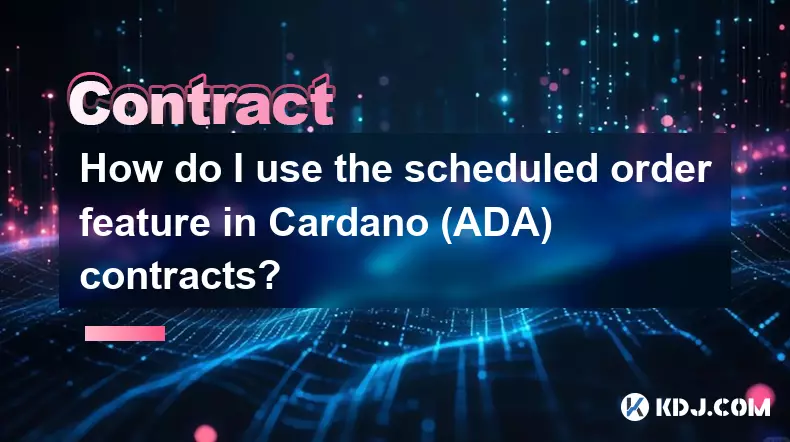
How do I use the scheduled order feature in Cardano (ADA) contracts?
Sep 28,2025 at 10:18pm
Understanding Scheduled Orders in Cardano Smart ContractsCardano operates on a proof-of-stakes consensus mechanism and uses the Plutus scripting langu...

How do I enable the "scalping-only" mode for Cardano (ADA) contracts?
Sep 24,2025 at 03:19am
Understanding Scalping Strategies in Crypto Derivatives1. Scalping in cryptocurrency trading refers to executing multiple short-term trades within min...
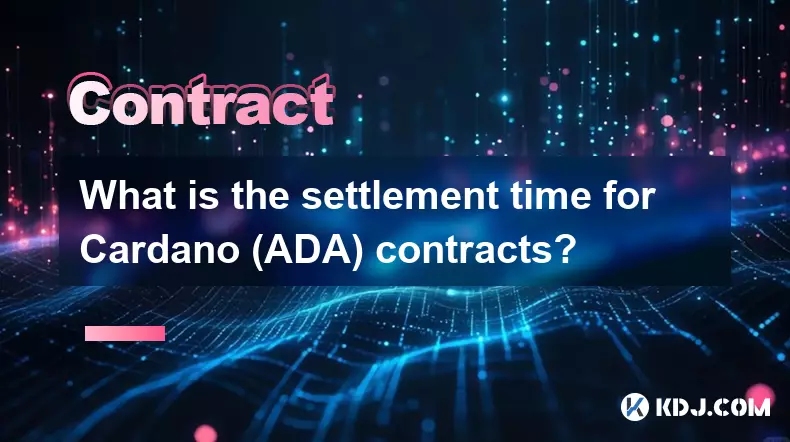
What is the settlement time for Cardano (ADA) contracts?
Sep 28,2025 at 04:18am
Understanding Cardano's Contract Settlement Mechanism1. Cardano operates on a proof-of-stake consensus model known as Ouroboros, which fundamentally i...
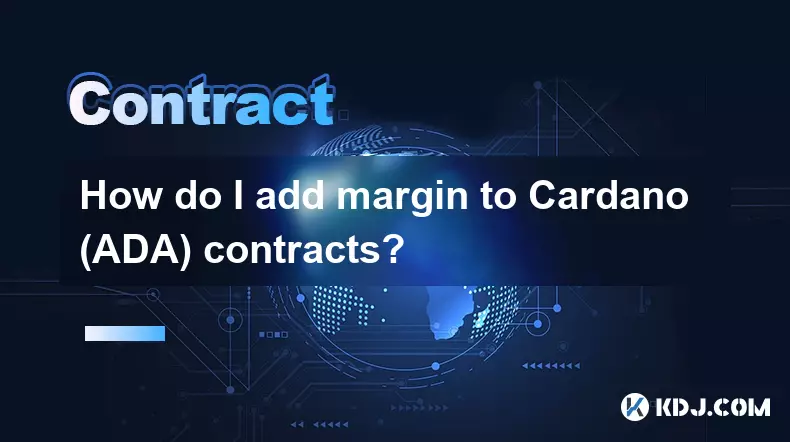
How do I add margin to Cardano (ADA) contracts?
Sep 27,2025 at 07:54pm
Understanding Margin in Cardano (ADA) Smart ContractsCardano operates on a proof-of-stake blockchain that supports smart contracts through its Plutus ...
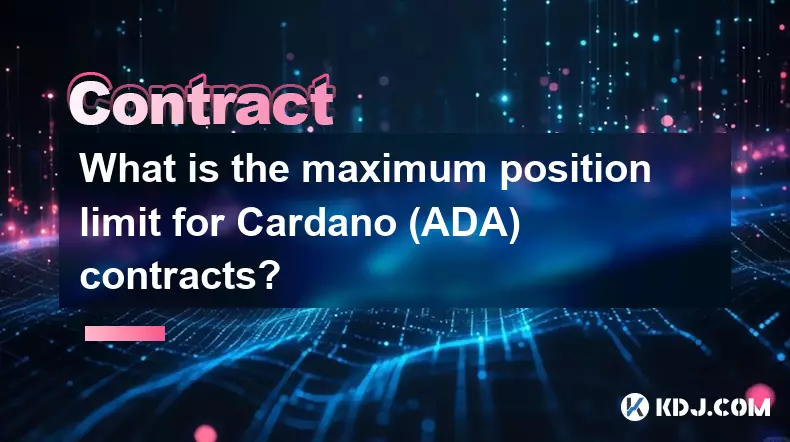
What is the maximum position limit for Cardano (ADA) contracts?
Sep 23,2025 at 11:00pm
Understanding ADA Futures and Derivatives Market Structure1. Cardano (ADA) futures contracts are offered by several major cryptocurrency derivatives e...
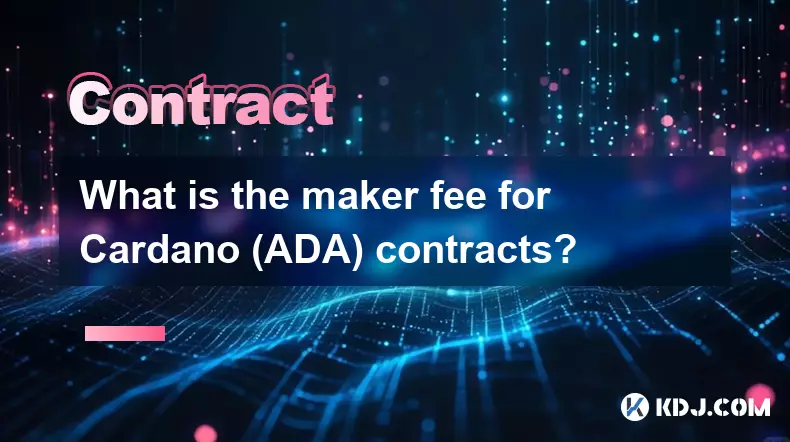
What is the maker fee for Cardano (ADA) contracts?
Sep 26,2025 at 09:01am
Understanding Maker Fees in Cardano (ADA) Contracts1. The concept of maker fees applies broadly across decentralized exchanges and smart contract plat...

How do I use the scheduled order feature in Cardano (ADA) contracts?
Sep 28,2025 at 10:18pm
Understanding Scheduled Orders in Cardano Smart ContractsCardano operates on a proof-of-stakes consensus mechanism and uses the Plutus scripting langu...

How do I enable the "scalping-only" mode for Cardano (ADA) contracts?
Sep 24,2025 at 03:19am
Understanding Scalping Strategies in Crypto Derivatives1. Scalping in cryptocurrency trading refers to executing multiple short-term trades within min...

What is the settlement time for Cardano (ADA) contracts?
Sep 28,2025 at 04:18am
Understanding Cardano's Contract Settlement Mechanism1. Cardano operates on a proof-of-stake consensus model known as Ouroboros, which fundamentally i...

How do I add margin to Cardano (ADA) contracts?
Sep 27,2025 at 07:54pm
Understanding Margin in Cardano (ADA) Smart ContractsCardano operates on a proof-of-stake blockchain that supports smart contracts through its Plutus ...

What is the maximum position limit for Cardano (ADA) contracts?
Sep 23,2025 at 11:00pm
Understanding ADA Futures and Derivatives Market Structure1. Cardano (ADA) futures contracts are offered by several major cryptocurrency derivatives e...

What is the maker fee for Cardano (ADA) contracts?
Sep 26,2025 at 09:01am
Understanding Maker Fees in Cardano (ADA) Contracts1. The concept of maker fees applies broadly across decentralized exchanges and smart contract plat...
See all articles










































































